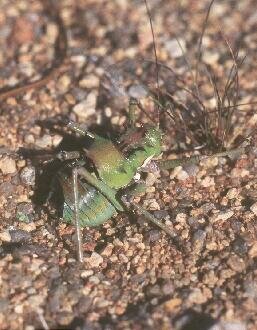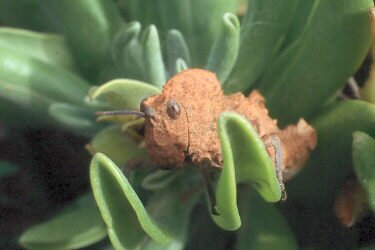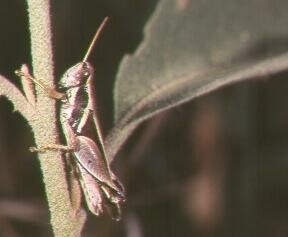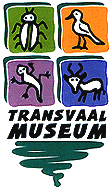
E - MAIL
Collection manager (Invertebrates)
Albert Makubung
Preparator
LINKS
Visit the site dedicated
to the locally infamous
Entomology Links
Department of Invertebrates
General Enthomology Collection
Order ORTHOPTERA (Crickets & Grasshoppers)
The Department of Invertebrates is responsible for research and curation of all invertebrate collections at the museum. The Department consists of Arachnida, Coleoptera, Hymenoptera, Lepidoptera, Odonata, Orthoptera and Neuroptera collections.
Grasshoppers and locusts are well-known insects but a general description of the body structure (morphology) of these insects is usefull.
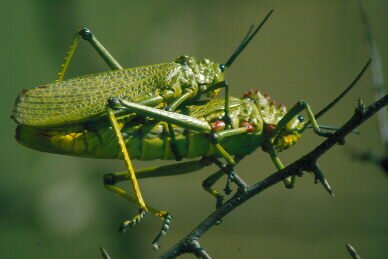
The order is divided into two groups:
-
Suborder Caelifera (short-horned grasshoppers) - vegetarian
-
Suborder Ensifera (crickets, mole crickets, king crickets and longhorned grasshoppers).
Family Acrididae (Grasshopers, 10 000 spp. worldwide)
Family Gryllidae (True crickets, 4 000 spp. worldwide)
Family Gryllotalpidae (Mole crickets, 60 spp. worldwide)
Family Raphidophoridae (Cave crickets, 500 spp. worldwide)
Family Tettigoniidae (Katydids, 6 000 spp. worldwide)
Family Anostostomatidae (King crickets, )
|
|
|
Locusts, grasshoppers, Longhorned grasshoppers and crickets belong to the Order Orthoptera, of which there are about 20 000 species in 28 families known on earth.The name Orthoptera means straight-winged, and an examination of a grasshopper will reveal a pair of straight, leathery forewings, called the tegmina.
As with all insects, the body comprises a head, thorax and abdomen, of which the thorax and abdomen are segmented. The hind wings are broad and membranous, folded fanwise under the tegmina at rest. Most orthopterans can jump and fly well, but there are many that are wingless, or have very reduced wings. All species undergo incomplete metamorphosis.
The sounds made by the various Orthoptera are produced by mechanical means: the apparatus usually consists of a sharp or serrated edge (the scraper) which is rubbed against a file-like surface or ridge (the file). The file and scraper may be located on the wings only , or on the legs and wings, or on the legs and abdomen.
|
Toad Grasshopper |
|
|
The males are hollow and inflated with air, so that they appear semi-transparent. They produce a shrill noise by rubbing the hindlegs against ridges on the abdomen, and the inflated body then serves as an amplifier. |
This is the largest group, about 10 000 species are known to science. The majority of Acridoidea are so-called veld grasshoppers which are solitary in habit with a sparse distribution. However, about 20 species are known, which under favourable conditions, may form huge migrating swarms which travel great distances, causing enormous damage to crops. |
